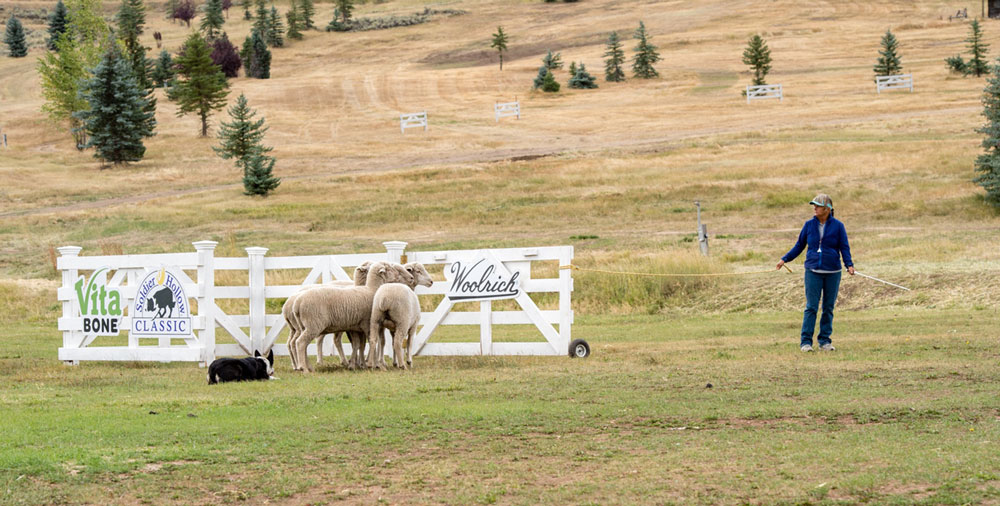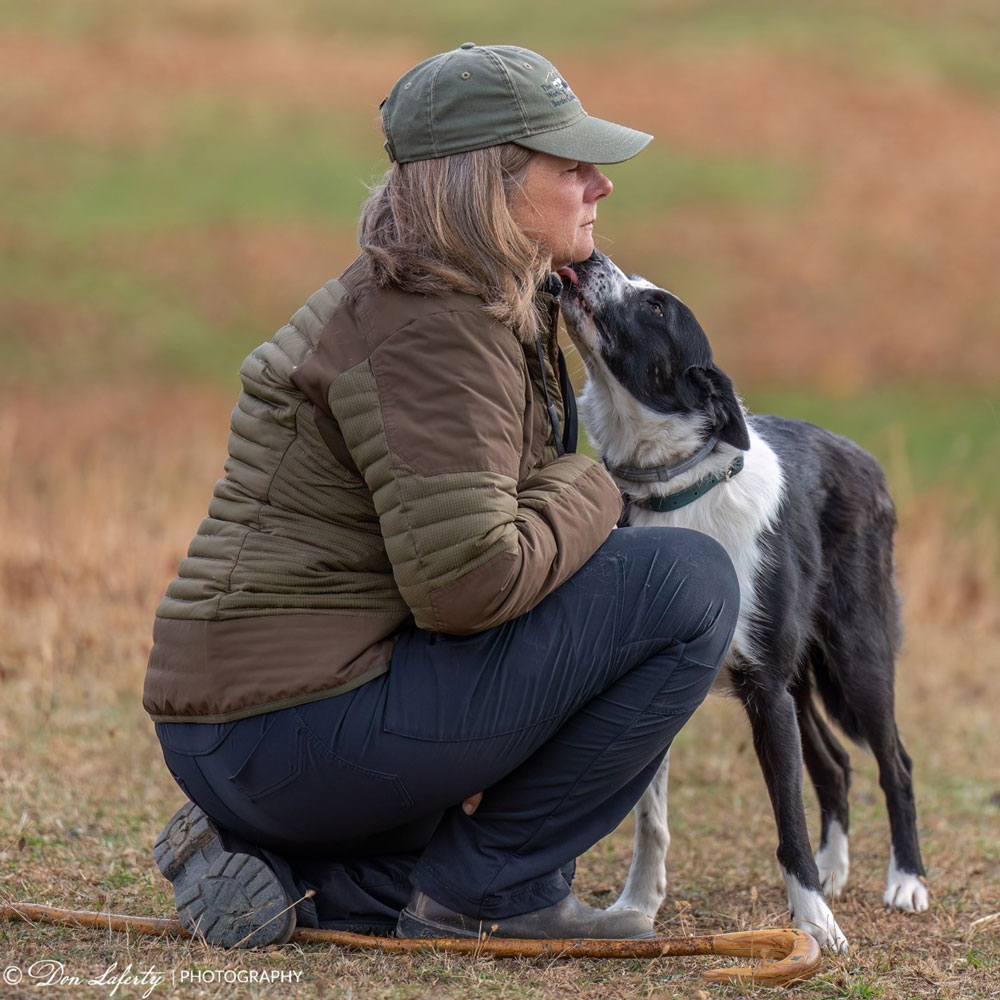Anne Marie Duquette interviewed Kay Stephens, DVM and Beth Kerber winners of the Books Training or Sports category with their book, “Think Like a Sheepdog Trainer: A Guide to Raising and Training A Herding Dog.”
Congratulations on your win! Tell us about your experience and expertise, and how this relates to your entry. What target audience did you write for, and why?
Beth Kerber: I’d been herding with Border collies for about 10 years when Kay Stephens approached me about writing a book. I said “Yes.” I saw a need for a book that looked at sheepdog training through the lens of a science-based learning theory and behavior analysis. I worked my Border collies with Kay and appreciated how she broke down training into small, manageable pieces, as well as her kind approach to dogs and people. With my writing background in journalism and copywriting, I thought we could create a top-notch book.
Kay Stephens: I’m a veterinarian with a master’s degree in veterinary pharmacology. I’ve been working with border collies, teaching pet dog training classes and doing behavior counseling as a veterinarian since 1992. I hoped we could combine the expertise I’ve developed in these three fields to create a book that would be helpful to novice sheep dog handlers.
Beth Kerber: Our target audience was dog owners who were new to sheepdog herding. Many people come to sheepdog herding through other dog sports, such as agility and obedience. However, several experienced handlers told us they’ve benefitted from the book, too.
Kay Stephens: We spent a lot of time watching novice herding trials and listening to what handlers were saying and doing.
Tell us about the co-writing experience. What are the advantages and disadvantages to co-writing a book?
Beth Kerber: Co-writing made the writing process take longer, but it resulted in a better book. We created our first outline of the book while driving from Ohio to Texas. We each drafted sections and then emailed it to the other. We also had many phone conversations where we clarified different sections.
Kay Stephens: Well, I never would have written the book without Beth. I did not have the confidence to think anyone would want to hear what we had to say. She did all the hard work to make it into a readable and interesting format. She also happily put up with the process of getting it published which I never would have done. She’s a writer, I’m just a dog trainer.
Beth Kerber: And I couldn’t have written the book without Kay. She’s an excellent dog trainer, and very good at breaking down training into very small manageable steps. We both love herding, but we were at different steps in the herding journeys.
One of the challenges in writing and editing the book was that Kay lives in Texas and I live in Ohio. During the winter months, Kay is super busy with training and competing with dogs. That’s the time that I usually spend indoors writing. Because of our varied schedules, there were times that work wasn’t being done. So, it took several years to complete.
What prompted you to submit this specific entry? Why do you think it struck a special chord with the public and the judges—and with you?
Beth Kerber: We wanted to create a book that was readable and informative. Before we began writing it, we reviewed dozens of non-fiction books and noted aspects that we liked or didn’t like about them.
Throughout our book, we include short narratives where we shared our experiences in training. For instance, to illustrate the emotional component of dog training, Kay told the story about the time she and another trainer taught their dogs to go into their crate. She used positive reinforcement while the other trainer used an ear pinch.
Kay Stephens: We worked very hard on the format and tried to apply the principles of learning to the layout of the book. We wanted to make it easy to read and digest. Many herding books are very dense or poorly organized, and plowing through them to find information is a chore. Some have incorrect or poor illustrations.
We wanted this book to be easily accessible, reader friendly and yet scientifically accurate. We also wanted good quality accurate photographs and drawings to properly demonstrate the exercises we described.
How big a part have dogs played in your personal and professional life? Was there a particular dog that sparked your interest in interacting with the public? Tell us about this special dog, and/or the dogs in your contest entry.
Beth Kerber: Every one of my dogs has taught me something, but the dog that made the biggest impact in my herding journey was Jack, a dog that Kay had trained and sent to me when he was 8 years old.
One of the hardest things for me when I started out was visualizing what a correct flank, outrun and drive looked like. Jack showed me what they looked like and what a good herding dog can do. More importantly, Jack was very kind to his sheep. This allowed me to relax and enabled me to learn so much.
Kay Stephens: I have been around dogs all my life. In fact the only baby photos I have are me and the family beagle sleeping in the dog bed. I grew up reading Albert Payson Terhune’s collie books and wanted a collie so badly my parents finally let me get a sheltie when I was about 10. I’ve had shelties or border collies ever since. Because my family was pretty dysfunctional, having dogs was my anchor.
I’ve had multiple special dogs but the first one was Jessie, a very independent sheltie. No one told her that shelties can’t herd, and she started me on the road to herding. She also refused to be forced into doing anything, and started me on the road to learning theory and positive reinforcement training.
Who else helped in making this book possible? Were they also involved with dogs?
Beth Kerber: People in the sheepdog community are multi-talented. They provided photographs and were also early readers of the book. My writing mentor, Cathy Essinger, is a dog lover, and encouraged us to include short stories about our own experiences in the book.
Kay Stephens: The main person that helped us is Carol Clawson. She provided most of the photographs as she is a very skilled photographer. She’s also a retired attorney and helped us with legal aspects we never could have solved ourselves. She also read and critiqued early versions of the book.
What ongoing or future canine projects do you have planned? Are they personal (like cuddling your favorite pooch or volunteering at the local shelter) or professional (like selling articles, training, or conducting medical research)?
Beth Kerber: I’ve been working on several essays based loosely on the theme of “What the dogs taught me.” I’ve also been working with Kay on making some training videos that we’ve posted on our “Think Like a Sheepdog Trainer” Facebook page.
Kay Stephens: We are considering a sequel, either addressing the skills needed to become a good sheep dog trial handler or possibly more advanced or in-depth training information.
Congratulations again and thank you for sharing with us.



